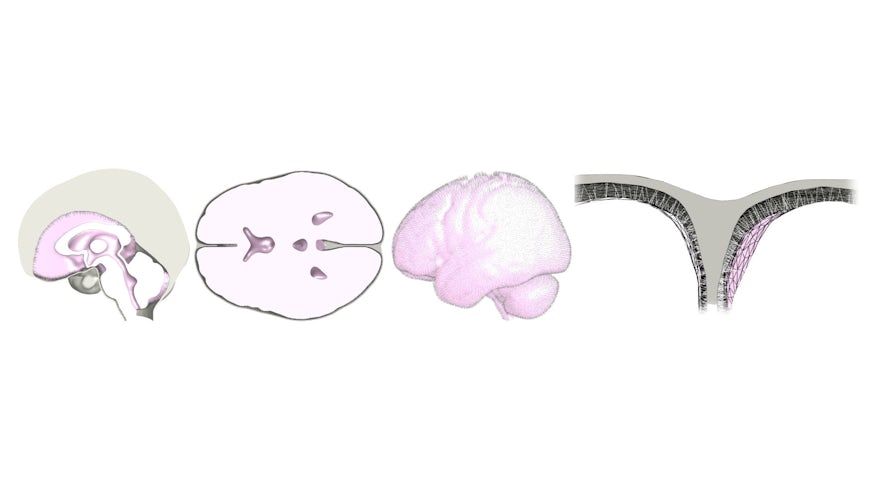Computer model of real life brain plots more accurate route for neurosurgeons
1 August 2023

Scientists have developed a new method for measuring the physical properties of the human brain to better understand how it moves during surgery.
The first-of-its-kind study applied data from MRI scans of real-life brain motion to a novel computational model to reveal the biomechanics behind a process known as brain shift.
Caused by changes in head position, brain shift describes shape changes and tiny movements of less than 1mm the brain undergoes within the skull.
Understanding this process is vital in stereotactic neurosurgery, where doctors use a combination of 3D coordinates and CT or MRI scan images to precisely locate points in the patient’s brain to deliver drugs or implant electrodes.
The team, based at Cardiff University, say their findings could lead to more accurate surgical plans, and better outcomes for patients undergoing brain surgery.
Lead author Dr Nicholas Bennion, a Lecturer at Cardiff University’s School of Engineering, said: “Accurately capturing the mechanical properties of human brain tissue can be extremely challenging, often limiting the usefulness of computational models.
“However, it is a vitally important step when attempting to simulate how the brain deforms under different conditions.
“Our new results open the door for prediction of brain shift across a wide range of neurosurgical applications, for example, when planning the trajectory of a surgical device during neurosurgery. Under these conditions, neurosurgeons are trying to target structures as small as a grain of rice, and so a movement of a millimetre or so can be very significant.”
“Our model means movement of the brain relative to the skull could be predicted pre-operatively enabling adjustments to be made to the surgical plan to improve the effectiveness of these procedures.”
Unlike previous studies, which measured the properties of the brain using tissue from organs preserved in chemicals, the team, which also included researchers from Cardiff University’s Schools of Computer Science and Informatics, and Psychology, in collaboration with Renishaw Neuro Solutions Ltd, performed MRI scans on living people.
11 participants were scanned lying face down and then face up using Magnetic Resonance Imaging facilities at the Cardiff University Brain Research Imaging Centre.
The resulting brain shift data enabled the researchers to develop a bespoke computational model of the head which maps the different material characteristics of the brain and tissues that connect it to the skull.
Dr Bennion added: “Our model can be used to simulate the expected deformation of the brain during neurosurgical procedures.
“With further development, this means more accurate positioning of surgical devices during neurosurgery and, as a result, better outcomes for patients.”
The study is published in the Journal of the Royal Society Interface.
Share this story
The School has world leading research, strong links with industry, and a friendly and supportive teaching environment make us one of the leading engineering schools in the UK.



